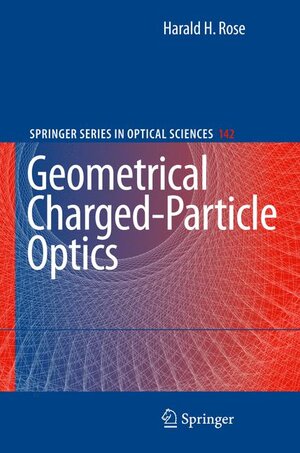Dieser Titel wurde ersetzt durch:
- Geometrical Charged-Particle Optics (978-3-642-32118-4) - Einband - fest (Hardcover)

×
![Buchcover ISBN 9783540859154]()
Aus den Rezensionen:
„... Das gut 400 Seiten starke Buch wendet sich an fortgeschrittene Studierende mit guten mathematischen Kenntnissen und an Entwickler elektronenoptischer Elemente und Systeme. Für letztere ist der Besitz dieses Werkes ein Muss, da Rose und seine Schüler die Grundlagen und Ausführungen der Korrektoren, Monochromatoren und abbildenden Energiefilter zusammengefasst behandeln. ... Beginnend wie ein Lehrbuch wandelt sich der Charakter zu einem Nachschlagewerk ... Der Leser muss hart arbeiten, um dieses auf hohem Niveau ... geschriebene Werk Roses ... zu verstehen. Aber es lohnt sich sehr ...“ (Erich Plies, in: Physik Journal, August/September 2009, Vol. 8, Issue 8/9, S. 120)
Geometrical Charged-Particle Optics
von Harald RoseThe resolution of any imaging microscope is ultimately limited by di? raction and can never be signi? cantly smaller than the wavelength ? of the ima- forming wave, as realized by Abbe [1] in 1870. In a visionary statement, he argued that there might be some yet unknown radiation with a shorter wa- length than that of light enabling a higher resolution at some time in the future. The discovery of the electron provided such a radiation because its wavelength at accelerating voltages above 1 kV is smaller than the radius of the hydrogen atom. The wave property of the electron was postulated in 1924 by de Broglie [2]. Geometrical electron optics started in 1926 when Busch [3] demonstrated that the magnetic ? eld of a rotationally symmetric coil acts as a converging lens for electrons. The importance of this discovery was s- sequently conceived by Knoll and Ruska [4] who had the idea to build an electron microscope by combining a sequence of such lenses. Within a short period of time, the resolution of the electron microscope surpassed that of the light microscope, as depicted in Fig. 1. This success resulted primarily from theextremelysmallwavelengthoftheelectronsratherthanfromthequalityof standard electron lenses which limit the attainable resolution to about 100?. Therefore, shortening the wavelength by increasing the voltage was the most convenient method for improving the resolution. However, radiation damage by knock-on displacement of atoms limits severely the application of hi- voltage electron microscopes.





